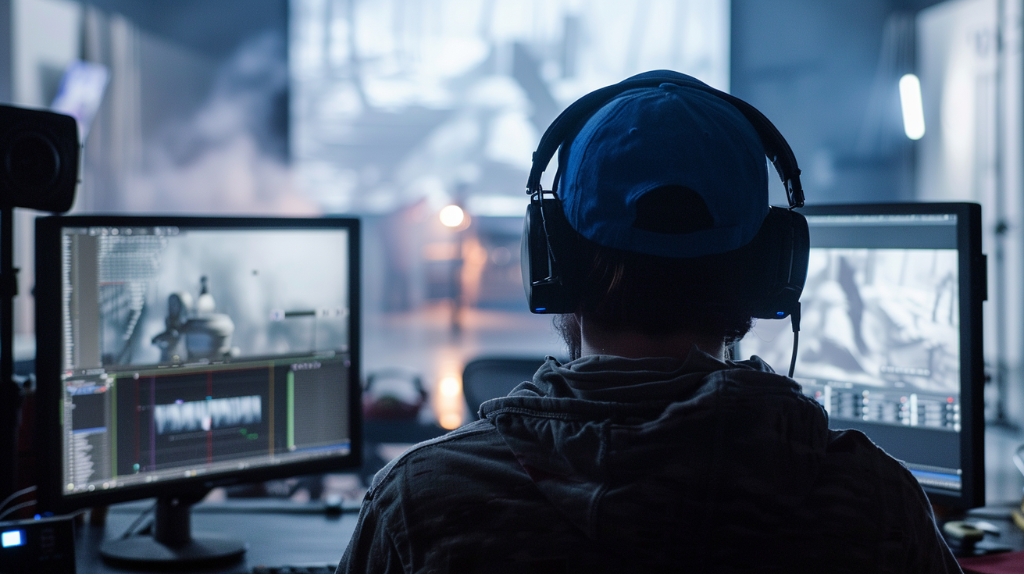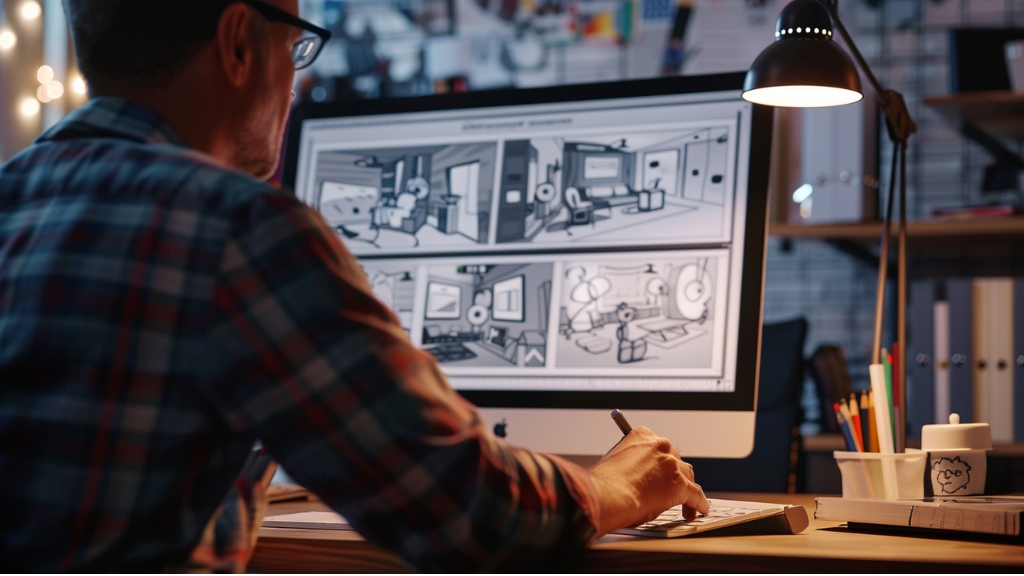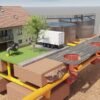
Introduction
Animation captivates audiences worldwide with its vivid stories and creative visuals. The magic of bringing characters and worlds to life, frame by frame, is a process that fascinates and entertains. However, behind the enchanting scenes lies a complex and labor-intensive craft that requires significant investment. Understanding why animation costs money is crucial for appreciating the value and effort involved in creating high-quality animated content.
Creating animation is not just about drawing pictures. It involves a meticulous and detailed process that combines artistic skill, advanced technology, and extensive labor. From initial concept development to the final polished product, each step demands expertise and precision. The costs associated with animation reflect the dedication and resources needed to produce content that engages and resonates with viewers.
For expert animation services that bring your ideas to life with precision and creativity, contact Austin Visuals today. Call us at (512) 591-8024 or email us at [email protected]. Visit our websites at www.austinvisuals.com and medical3danimationcompany.com to learn more about our services and how we can help you achieve your vision.
Our Clients include:
Why Does Animation Cost Money?
Labor-Intensive Process
Creating animation is an incredibly labor-intensive process that demands the expertise of various skilled professionals. Sketch artists, character designers, and animators work collaboratively to bring concepts to life. Sketch artists lay the groundwork by drafting initial storyboards and visual elements. Character designers then take these concepts and develop detailed characters with distinct features and personalities. Finally, animators painstakingly bring these characters to life, ensuring fluid movements and expressions. Each stage requires precision, creativity, and significant time investment, all contributing to the overall cost of the project.
Frame-by-Frame Precision
Frame-by-frame animation is a meticulous process that greatly influences both the realism of the final product and its cost. In this technique, each frame is individually crafted, requiring animators to make slight adjustments to characters’ poses and movements for every single frame. This laborious method results in smooth, lifelike animations, but it also demands an immense amount of time and effort. The high level of detail and precision required for frame-by-frame animation ensures that the final product is visually stunning and engaging, but it also significantly increases the overall project cost.
Advanced Skills and Specialized Software
Expertise Required
Animation requires professionals who are highly skilled in using complex software to create seamless and engaging visuals. These experts possess a deep understanding of animation principles, as well as the technical know-how to use advanced tools and technologies. The need for such expertise means ongoing expenses for hiring and retaining talented animators who can deliver high-quality work. The value of their skills is reflected in the detailed, lifelike animations they produce, which require both artistic talent and technical proficiency.
Cost of Premium Software
Producing high-quality animation also involves significant investment in premium software. Tools like Autodesk Maya, Blender, Adobe After Effects, and Toon Boom Harmony are essential for creating both 2D and 3D animations. These programs offer a wide range of features and capabilities, enabling animators to craft intricate and polished animations. However, the cost of these software licenses can be substantial. Additionally, keeping up with updates and new versions to maintain cutting-edge capabilities adds to the overall expense. These tools are indispensable for animators, allowing them to bring creative visions to life with precision and efficiency.
Factors Influencing Animation Costs
Style and Length
The style and duration of an animation are significant factors that influence its overall cost. Different animation styles, such as 2D, 3D, stop-motion, or motion graphics, require varying levels of complexity and time investment. For instance, 3D animations typically demand more resources and expertise compared to 2D animations, resulting in higher costs. Additionally, the length of the animation plays a crucial role. Short animations, such as brief explainer videos, generally cost less than long-form content like full-length animated features or series. The more extensive the project, the more time and effort required, which increases the overall cost.
Detailed and Realistic Animations
Creating detailed and realistic animations is a meticulous and time-consuming process that significantly impacts the cost. High-quality animations require a greater level of detail, including lifelike character movements, intricate backgrounds, and seamless transitions. This level of precision demands advanced skills and sophisticated software, both of which contribute to higher expenses. For example, animations that depict realistic water simulations, complex crowd scenes, or detailed facial expressions require extensive labor and technical expertise, making them more expensive to produce. These intricate details enhance the overall viewer experience, but they also necessitate a larger budget to achieve the desired level of realism and engagement.
Comparing Budgets Across Animation Projects
2D vs. 3D Animation
When comparing the costs between 2D and 3D animations, several factors come into play. Generally, 2D animation is less expensive than 3D animation due to its simpler production process and lower resource requirements. 2D animation involves creating flat images with limited movement and fewer details, which can be completed relatively quickly. In contrast, 3D animation requires the creation of three-dimensional models, complex textures, and realistic lighting, which demand more time, effort, and advanced software. This increased complexity and the need for specialized skills make 3D animation projects typically more costly than their 2D counterparts.
Small Studios vs. Large Studios
The budget for an animation project can also vary significantly depending on whether it is handled by a small studio or a large production company. Smaller animation studios often operate with lower overhead costs and more flexible budgets, allowing them to offer competitive pricing. They may employ creative solutions, such as using streamlined workflows or leveraging freelance talent, to keep expenses manageable while still delivering high-quality work. On the other hand, larger studios have access to more resources and a broader talent pool, but their projects often come with higher costs due to their extensive infrastructure and higher personnel expenses. Both small and large studios have their advantages, and the choice often depends on the specific needs and budget constraints of the project.
Animation vs. Live-Action Filming
Cost Comparisons
When comparing the costs of animation and live-action filming, several factors determine which medium is more economical. Live-action filming often incurs high costs related to location scouting, set construction, and hiring actors and crew. Special effects, props, and post-production editing can further escalate expenses. In contrast, animation allows for complete control over the environment without the need for physical sets or on-location shoots. However, detailed and realistic animation, particularly 3D animation, can be expensive due to the labor-intensive process and advanced technology required. For instance, a live-action commercial may be cheaper for simple scenes, but an animated commercial could be more cost-effective for complex or fantastical visuals.
Benefits of Animation
Animation offers several cost benefits over live-action filming in specific scenarios. For projects involving fantastical elements, intricate environments, or characters that do not exist in the real world, animation can be far more cost-effective and visually appealing. It eliminates the need for costly sets, special effects, and location logistics. Additionally, animation provides unparalleled flexibility and creative freedom, allowing for seamless transitions, imaginative visuals, and unique storytelling techniques that are difficult to achieve with live-action filming. This makes animation an excellent choice for educational content, explainer videos, and marketing campaigns where creativity and clarity are paramount.
Cost Versus Quality in High-Budget Animations
Balancing costs and quality is crucial in creating impactful animation projects. Effective strategies for achieving this balance include prioritizing key scenes, optimizing production workflows, and leveraging existing assets. By focusing on the most visually important and narratively significant parts of the project, animators can allocate resources more efficiently.
Optimizing workflows through pre-production planning and storyboarding ensures that the animation process is streamlined, reducing unnecessary revisions and delays. Utilizing existing assets, such as reusable character models or backgrounds, can also help manage costs without compromising quality.
Investing in quality is essential for producing animations that resonate with audiences. High-quality animations require skilled animators, advanced software, and detailed planning. These elements contribute to the overall effectiveness of the animation, making it more engaging and memorable. While cost management is important, cutting corners on quality can lead to subpar results that fail to capture the audience’s attention. Therefore, a balanced approach that emphasizes both cost efficiency and high production standards is key to successful animation projects.
Conclusion
In summary, the cost of animation is influenced by a variety of factors, including the labor-intensive nature of the process, the need for advanced skills and specialized software, and the specific goals and requirements of each project. Understanding why animation costs money helps appreciate the meticulous craftsmanship and technological expertise required to produce high-quality animated content.
Balancing cost and quality is essential to creating impactful animations that resonate with audiences. While managing expenses is important, investing in skilled animators, advanced technology, and detailed planning ensures that the final product is engaging and visually stunning.
For expert animation services that combine creativity with technical excellence, contact Austin Visuals today. Call us at (512) 591-8024 or email us at [email protected]. Visit our websites at www.austinvisuals.com and medical3danimationcompany.com to learn more about how we can bring your vision to life with our top-tier animation solutions.







